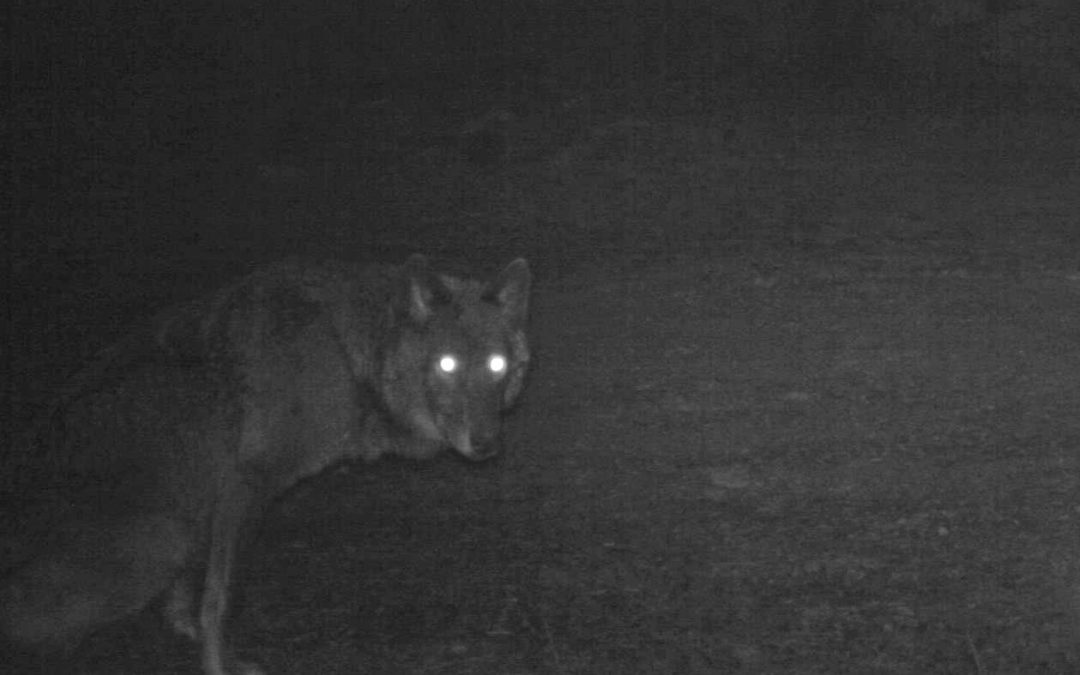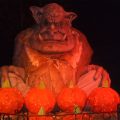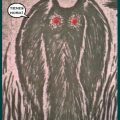Table of Contents
What is a black shuck? Dogs are said to be men’s best friends, but the Black Shuck definitely didn’t get the memo. The Black Shuck, also called Old Shuck, Old Shock, or simple Shuck, is the name given to a demon dog that roamed East Anglia. What is a black shuck? It is one of the many ghostly black dogs that appear in folklore across the British Isles, particularly in stories in Norfolk, Suffolk, Essex, and the Cambridgeshire fens. In this article, you’ll learn what is a black shuck?
The name Shuck came from the Old English word scucca, which means “devil” or “fiend,” and the root word skuh means “to terrify.” And indeed, the Black Shuck earned its name as a terrible spectre that haunts coastlines, graveyards, crossroads, and dark forests.
What is a black shuck? Though they are varying accounts of how the Black Shuck looks like, most agree that it appears as a large black canine with mangy fur, sometimes even as big as a calf or even a horse. At times, it appears without a head, and other times it floats on a carpet of mist. These hellhounds also were foaming at the mouth like a pack of rabid dogs, starved and ravenous for their next meal. Their eyes were huge and red like the fires of hell.
W.A. Dutt states in his 1901 Highways & Byways in East Anglia that “to meet him is to be warned that your death will occur before the end of the year. So you will do well to shut your eyes if you hear him howling; shut them even if you are uncertain whether it is the dog fiend or the voice of the wind you hear.”
The Black Shuck of Bungay and Blythburg
One of the most well-known reports of the Black Shuck happened at the churches of Bungay and Blythburg in Suffolk. The story goes like this:
On August 4, 1577, the monster burst through the doors of the Holy Trinity Church in a flash of lightning, killing a man and a boy. Afterwards, scorch marks could be seen on the floor, on the path the Black Shuck took towards the north doors. It is said to kill two more people when it travelled to Blythburg Chuch, located 12 miles away.
Earlier Records
Though the most notable sighting of this monster was in 1500s, legends of a ghostly black demon dog had been reported in texts from centuries prior. The first written account can be traced back to the year 1127 in Peterborough. A huge troop of huntsmen rode into Peterborough and the surrounding woods. They were riding huge, hideous stallions and their hunting hounds were jet black with horrible eyes. People said that these hounds stayed in the area for a period of 50 days, throughout Lent up to Easter.
This isn’t an isolated case. Known as the Wild Hunt, such events were witnessed not just on English soil but also all across Europe where woods were abundant and prey were plenty. This could be one of the explanations behind the propagation of the tales of this monster and its keystone across European myths.
Rooted in Religion?
Northern cultures associated wild hunts with the change of the seasons from autumn to winter. It could be because of the strong winds and colder temperatures that forced people indoors. Indeed, most who didn’t have shelters would find themselves frozen to death.
The howling winds could be interpreted, in this light, as a pack of hunting hounds, especially at a time when it’s easy to promulgate tall tales as legends. Mothers who wanted to force their children indoors would tell stories of the monsters prowling about. After all, black hellhounds make for a far more frightening element than strong gusts of wind.
Another interesting take into the tale of the Black Shuck is rooted in religion. During the 1577 sighting, the Reformation was sweeping across Europe. The Catholic Church was losing its hold on its staunchest supporters, and thus might have used the story of this monster to keep people from converting. The Black Shuck was the devil’s work, and to protect themselves, they must be steadfast in their faith.
An Omen of Death or a Protective Guide?
There are contradictory beliefs when it comes to how seeing this cryptid could affect one’s luck. It could be seen as either a sign of ill fortune; indeed, Essex Maldon and Dengie, seeing the it is said to bring the witness’ immediate death. In some, the Black Shuck merely terrifies the witness, and in yet other tales, the He is a warning that someone close to the witness would soon die.
On the other hand, there were also stories of how Black Shucks were guides who protect women from harm, guarding them on their way home. Some black dogs lead lost travellers to the right path. These kinds of beliefs were more apparent towards the end of the 19th century.






 I write bitchin’ kick-ass books about serious sh*t. My books are written for everyone in an easy to read and understandable style.
I write bitchin’ kick-ass books about serious sh*t. My books are written for everyone in an easy to read and understandable style.